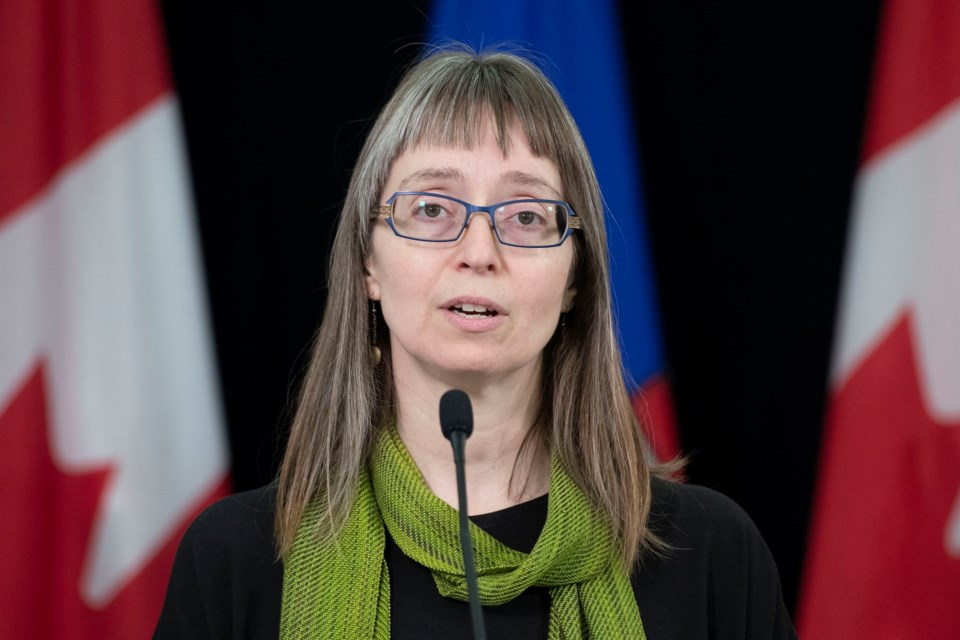Businesses in Alberta planning to reopen as part of the first stage of the province’s relaunch will need to document what they’re doing to reduce the risk of COVID-19 spread at their site, as will places of worship and funeral services.
On Thursday, Alberta’s chief medical officer of health Dr. Deena Hinshaw said those organizations will need to fill out a template within the first week of opening to identify any measures they are taking to lower the risk of transmission. They’ll then need to post the measures at their place of business or online.
“This action is intended to give a clearer sense of what measures are appropriate for each location, and to reassure customers and staff that each business is taking appropriate action to protect their health and safety,” Hinshaw said.
Thursday marked the first day of Alberta’s reopening strategy, which will happen in three stages.
Retail businesses, farmers’ market vendors, hair salons and barber shops have been allowed to open their doors in most of the province, while cafes, restaurants, pubs and bars have been allowed to reopen at 50 per cent capacity. Museums and art galleries can reopen, day cares and day camps can reopen with occupancy limits, and restrictions are easing on places of worship and funeral services as long as they follow the province’s sector-specific guidelines.
Hinshaw said the list of businesses that are allowed to reopen in the first stage includes all businesses not specifically listed as opening in the second or third stages.
The exceptions to these rules are Calgary and Brooks, which have seen more cases of COVID-19 than other areas of the province. On Wednesday, Hinshaw confirmed those two municipalities would enter the first stage of reopening over a period of 18 days, with retail businesses, farmers’ markets, day cares (with limited occupancy), museums and galleries allowed to open May 14. Hair salons, barber shops, restaurants, cafes, pubs and bars will be allowed to reopen May 25. On June 1, Brooks and Calgary will be allowed to open day camps, places of worship and funeral services.
“I understand having to wait the extra 10 days is frustrating for residents of these communities,” Hinshaw said.
“The reason for this 10-day wait is to allow us to monitor any increase in spread caused by the opening of retail, day cares and other activities in these communities where there is a higher baseline rate.”
Measuring the risks
Alberta should know by late next week whether the first stage will bring a “sudden, sharp increase” in cases, Hinshaw added.
“What I’m hoping is that ... (our cases) may go up a little bit, but we will be able through our collective actions to keep those numbers relatively flat,” she said.
“I do think that with more people out and about and interacting, there are more opportunities, more chances the virus could spread. But the more that we all together can follow the advice, can keep distant, can wear masks and wash our hands, the less likely we will see a sudden spike in increase of cases.”
- INTERACTIVE MAP: See the latest COVID-19 statistics across Canada by province/territory on our interactive map
Hinshaw reported another Albertan has died from the virus, bringing the total number of people who have died in the province to 121. Alberta has also confirmed 50 more people infected with COVID-19.
Sixty-five people are hospitalized, with 10 of them in intensive care.
There are 1,131 active cases right now, and 5,205 Albertans have recovered.
Rules on gatherings
Hinshaw provided clarity on rules around how many people can gather together at any one time. With restaurants reopening to 50 per cent of their total capacity – which could be more than 15 people – Hinshaw said those rules include having no more than six people per table and having two metres between tables.
In places of worship, Hinshaw said the province is allowing one-third of typical worship attendance or 50 people, whichever is smaller.
There is no maximum number of people for retail businesses because of how widely those stores differ in terms of size.
The 15-person rule remains in place for any gathering that doesn’t have a single organization in charge.



